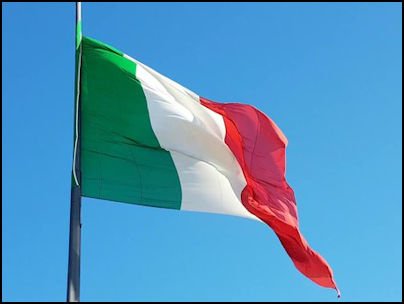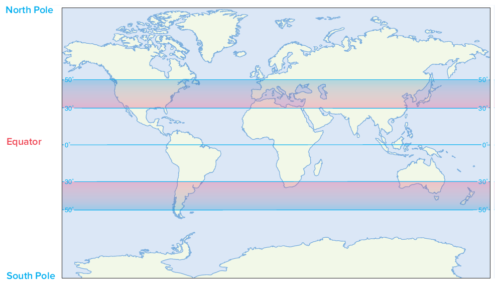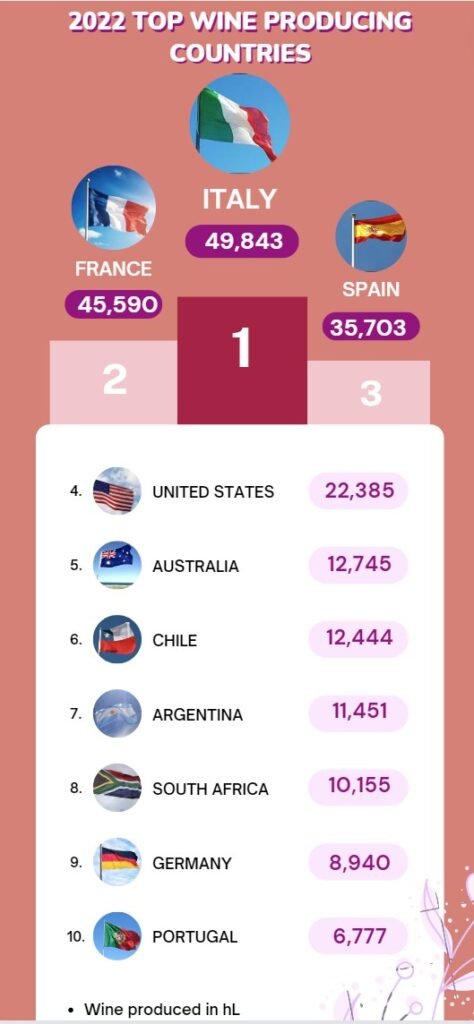When we think of wine-growing countries, the traditional ‘old world wines’ instantly spring to mind. Old-world wines refer to those produced in Europe and the surrounding regions with a long history of winemaking, such as France, Italy, Spain, and Germany. Wine production in these areas dates back to ancient times, with evidence of winemaking in places like Mesopotamia (modern-day Iraq) and ancient Egypt.
The Ancient Greeks and Romans further refined winemaking techniques and spread viticulture across Europe, establishing vineyards in regions like Bordeaux, Burgundy, Champagne, Tuscany, and the Rhine Valley. Monasteries played a significant role in preserving and advancing winemaking knowledge during the Middle Ages, with many monks producing wine for sacramental purposes.
During the Age of Exploration in the 15th to 17th centuries, European explorers introduced grapevines to the New World, where winemaking took root in places like the United States (California), Chile, Argentina, South Africa, Australia, and New Zealand. Settlers planted vineyards and adapted Old World techniques to suit local climates and conditions. The wine industry in the New World experienced significant growth and innovation, with an emphasis on varietal wines and modern winemaking practices.
Today, the Old World and New World wine regions continue to thrive, offering unique styles, grape varieties, and winemaking traditions. While Old World wines are often associated with terroir-driven expressions and a focus on tradition, New World wines are known for their fruit-forward flavours, innovation, and diverse styles. Both contribute to the rich tapestry of the global wine industry, offering wine enthusiasts a wide array of choices and experiences.
There are other surprising areas where wine production is emerging. Grapevines require optimal levels of sunlight and warmth to thrive and yield high-quality fruit. Extreme temperatures, whether too cold or too hot, hinder their ability to flourish. Ideal conditions for grapevine growth include a winter cold enough for dormancy. Consequently, grapevines thrive in regions at latitudes that offer the right balance of sunlight, warmth, and moisture.
These ideal conditions are between 30 and 50 degrees, with those closer to 30 degrees generally producing more warm-climate wines and those closer to 50 degrees, a cooler-climate style. Here, countries like Canada enter, with regions sitting in the 48-50 degrees northern zone and emerging in the new world wine industry.
As of 2023, Italy was the world’s top wine producer, closely followed by France and Spain, all considered the old world. In terms of volume, the USA leads the way from the new world, with Australia, Chile, Argentina and South Africa all producing similar volumes. Germany and Portugal round off the top 10.
Wineries around the world
Click here to find out more about the wineries in this region and to search for specific criteria.
Regions
Argentina, one of the world’s premier wine-producing countries, is renowned for Malbec. Mendoza is the largest and most important wine region, accounting for 75% of Argentina’s vineyards.
Australia is famous for its bold and fruit-forward wines, with regions like Barossa Valley, McLaren Vale, and Margaret River producing Shiraz, Cabernet Sauvignon, and Chardonnay, among others.
Canada is home to several notable wine-producing regions, primarily located in British Columbia and Ontario, with smaller regions across the country contributing to the Canadian wine industry’s diversity and growth.
Chile’s wine regions each offer unique characteristics and contribute to the country’s reputation for producing a wide array of excellent wines. From the cool coastal Casablanca Valley to the arid Elqui Valley, Chile’s diverse wine regions cater to a broad spectrum of wine preferences.

France
France is renowned for its diverse wine regions, including Bordeaux, Burgundy, Champagne, Rhône Valley, and Loire Valley, among others. French wines are esteemed for their quality, tradition, and terroir-driven expressions.

Germany
Germany’s wine regions include Mosel, Rheingau, and Pfalz, which encompass picturesque landscapes along rivers like the Rhine and Moselle. Steep vineyard slopes and cool climates yield exquisite Rieslings and other aromatic varietals esteemed for their elegance.

Italy
Italy boasts a rich winemaking heritage, with regions like Tuscany (home to Chianti and Brunello di Montalcino), Piedmont (famous for Barolo and Barbaresco), Veneto (known for Prosecco and Amarone), and Sicily.

Portugal
Portugal’s wine regions, from the Douro Valley to the Alentejo, showcase a rich tapestry of terroirs and grape varieties, crafting an array of wines from the world-renowned Port to the vibrant Vinho Verde, reflecting centuries of winemaking tradition.
New Zealand is known for its cool-climate wines, particularly Sauvignon Blanc from Marlborough and Pinot Noir from Central Otago. The country also produces excellent Chardonnay and Riesling.
South Africa
South Africa’s wine regions, spanning from the coastal vineyards of Stellenbosch and Constantia to the inland valleys of Paarl and Swartland, produce a diverse array of wines, including robust reds, crisp whites, and acclaimed Cape blends, influenced by the country’s geography and maritime climate.

Spain
Spain is the third-largest wine-producing country in the world. Regions like Rioja, Ribera del Duero, Priorat, and Catalonia are renowned for their red wines. Spain also produces high-quality white wines, sparkling Cava, and fortified Sherries.











